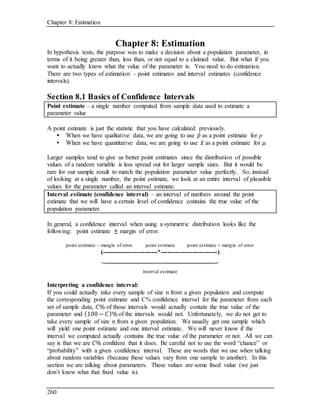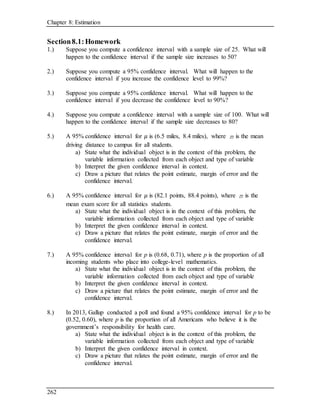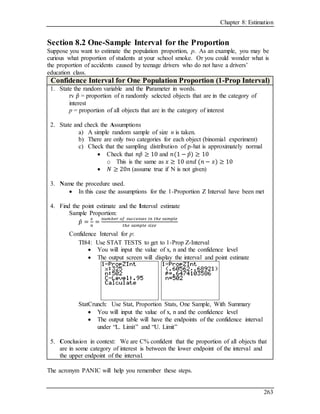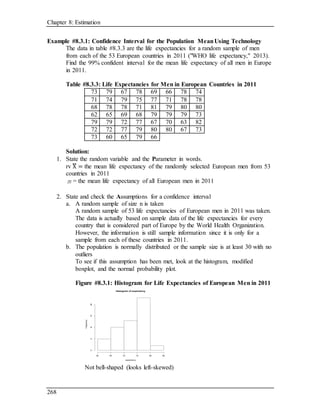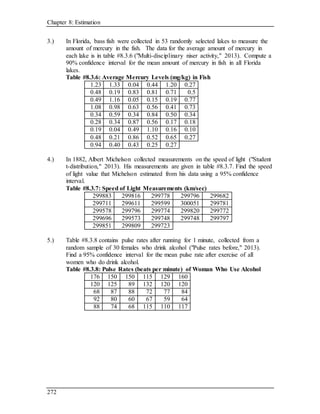This document discusses confidence intervals for estimating population parameters. It provides examples of constructing point and interval estimates for the population mean and proportion from sample data. Confidence intervals allow us to estimate a range of plausible values for the true population parameter based on the sample results and desired confidence level, rather than just a single point value. The width of the confidence interval depends on the sample size and confidence level, with larger samples and lower confidence levels producing narrower intervals.
